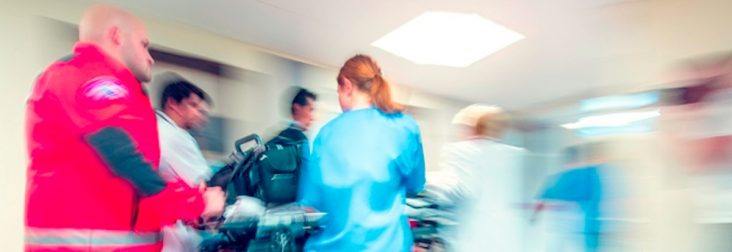Study: Payment Improvement Initiative reduced health costs by $34 million
by May 24, 2017 10:36 am 1,185 views

Arkansas’ Medicaid program saved more than $34 million in 2015 because of a program meant to reduce costs and incentivize care quality, a new report says.
The 3rd Annual Statewide Tracking Report, prepared by the Arkansas Center for Health Improvement and released May 23, studied Arkansas’s Healthcare Payment Improvement Initiative (AHCPII).
Medical providers traditionally have been reimbursed on a fee-for-service model based on the amount of care provided. AHCPII began in 2011 as an initiative to control costs by financially rewarding quality and efficiency. It originally involved the state Department of Human Services, then-Surgeon General Dr. Joe Thompson, Arkansas Blue Cross and Blue Shield and Qualchoice. Later participants included insurance provider Centene/Ambetter and self-insured employers including Walmart and the plan covering state and public school employees.
The initiative includes two strategies. One is a patient-centered medical home program, where a provider coordinates prevention, chronic disease management, and other aspects of care. The other is the episodes of care model, where, for 14 types of acute conditions, a “patient journey” was created describing events that should and should not happen. Quality metrics and expected costs were established, with a principal accountable provider assigned to each episode. Those providers are eligible for bonus payments if targets are met and can be required to provide refunds if they are not.
The report found that the patient-centered medical home program, which began in 2014, reduced the rate of growth in health care costs for the second consecutive year, with costs rising .7% among patient-centered medical home practices compared to 1% growth among other practices and a benchmark trend of 2.6% based on historical cost growth in Arkansas. The program’s cost of $606.5 million was $54.4 million less than the expected $661 million cost, a reduction of 8.2%. In 2014, that reduction was $34.3 million.
Of that $54.5 million, $14.8 million was reinvested in the provider community for activities such as using electronic health records and providing full-time live telephone access to patients. Another $4.6 million was shared with 22 provider groups who achieved quality and financial targets. Payments ranged from $35,000 to more than $1.5 million. The remaining $35 million represented the final cost savings.
The report found that the patient-centered medical home program reduced Arkansas Medicaid hospitalizations by 16.6% and reduced emergency room visits by 5.6% in 2015 after those numbers also fell the previous year. Measurements for diabetes management, breast cancer screenings, and thyroid screenings among Medicaid patients improved. But other quality measurements among those patients decreased from 2014 to 2015. Adolescent wellness visits were reduced by almost 11%, infant and child wellness visits dropped by almost 4%, and attention deficit hyperactivity disorder (ADHD) assessments fell almost 3%.
The report found that the majority of eligible medical providers are now participating in the initiative. Participation in the patient-centered medical home program has grown to 192 clinics and 919 primary care providers in 2017, up from 123 clinics and 659 primary care providers in 2014. The percentage of eligible Medicaid recipients served by a patient-centered medical home increased from 77% in 2014 to 82.5% in 2015, or 339,000 recipients.
The episodes of care model also saw improvements and achieved cost savings in several areas. Among Medicaid patients, the percentage of C-sections has been reduced each year since 2012, falling from 39% in 2012 to 32% in 2015. Among Blue Cross patients, the rate of C-sections fell from 38.7% in 2014 to 35.9% in 2015. Costs for the entire childbirth process were reduced from $3,508 in 2012 to $3,413 in 2015 among Medicaid patients. Among Blue Cross patients, however, they rose 1.3% in 2015 after falling 1.6% the year before.
Other results among Medicaid patients treated with the episodes of care model included the following:
– Unnecessary antibiotic prescriptions for non-specific upper respiratory infections dropped 28% from 2012 to 2015, while costs per episode were flat despite increases in drug prices.
– ADHD episode costs fell 19% from 2013 to 2015.
– The costs of total joint replacements fell by 4% per episode from 2014 to 2015.
– The average cost for a colonoscopy episode fell 9% from 2013 to 2015.
Medicaid and Blue Cross are considering adding other episodes, including appendectomies, pediatric pneumonia, hysterectomies, and urinary tract infections involving emergency room visits.
To make AHCPII possible, an advanced analytic infrastructure was developed that has processed 2 billion medical claims for more than 5.3 million episodes in Medicaid alone.
The program was implemented with the help of a $42 million federal State Innovation Model Testing grant by the Centers for Medicare and Medicaid Services. Arkansas was one of six states to receive the grant in 2013.
The effort mirrors one by the federal Medicare program, which is also pushing alternative payment models meant to incentivize quality and efficiency. Arkansas was one of seven regions participating in the program’s Comprehensive Primary Care initiative launched in 2012 and was one of four that generated shared savings of $11.5 million after costs in 2015. Hospital admissions fell by 15.7%.
The state is one of 14 states participating in the second-phase Comprehensive Primary Care Plus initiative. Participation will expand from 69 Arkansas clinics involved in the first initiative to 182 primary care practices this year.
The Arkansas Center for Health Improvement, which performed the study, is a health policy center supported by the University of Arkansas for Medical Sciences, the Arkansas Department of Health, Arkansas Blue Cross and Blue Shield, and Arkansas Children’s Hospital.
